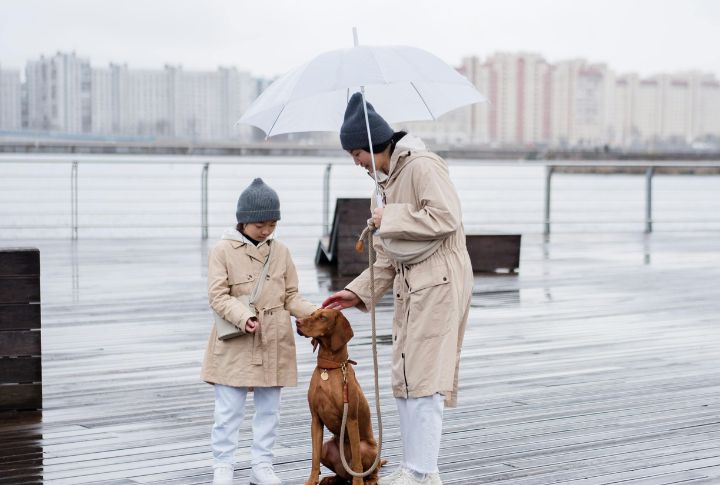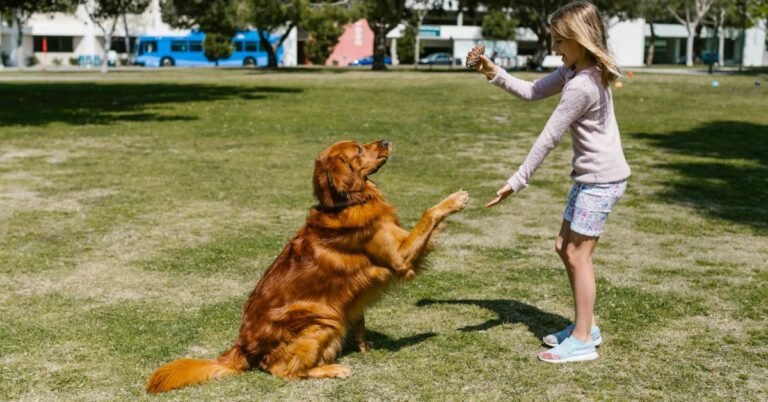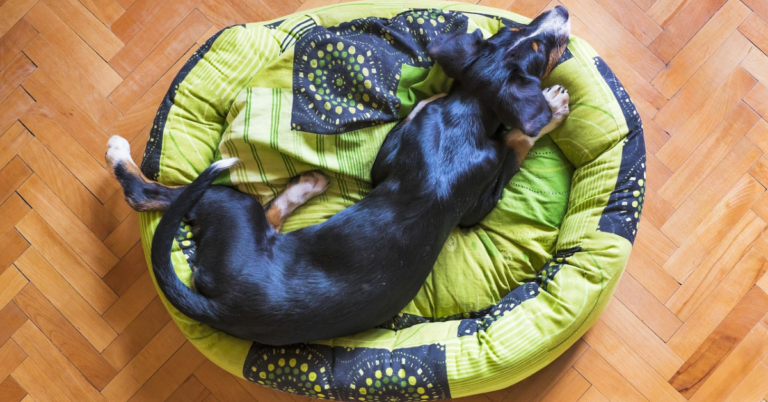10 Vet-Approved Tips For Keeping Your Dog Safe On Rainy Walks

Assess Rain Intensity Before Heading Out
Before stepping outside, check a weather radar app to time your dog walk between downpours. Light rain is fine for most dogs, but heavy showers or storms can pose safety risks. Some dogs can even detect falling air pressure, providing early “weather alerts” before the storm begins.
Prioritize Your Dog’s Individual Preference
Every dog reacts differently to rain. While some joyfully splash through puddles, others hesitate at the first drizzle due to discomfort, sensitive hearing, or anxiety. Pay attention to your dog’s reactions because forcing them out may increase stress. Always prioritize comfort and adapt walks to your dog’s unique personality.
Invest in a well-fitting raincoat for warmth.
A waterproof, well-fitted raincoat helps keep your dog dry and cozy during wet walks. This is especially vital for breeds with thin coats that lose heat quickly. Many raincoats feature hoods and cheerful colors, thereby keeping your pup both protected and fashion-forward when the weather turns wet.
Use Reflective Gear For Enhanced Visibility
Rain and low light can make it hard for drivers to see you and your dog. Reflective collars, leashes, or flashing LED tags improve visibility during gloomy walks. These simple accessories not only look stylish but also make a real difference in helping both of you stay safe outdoors.
Avoid Thunderstorms to Prevent Lightning Strikes

Never walk your dog during a thunderstorm. Lightning, falling debris, and loud thunder can frighten dogs and even cause injuries. Forcing them outside during storms can even create long-term outdoor anxiety. Many dogs instinctively hide before a storm hits, which signals it’s time to stay safe indoors together.
Protect Paws With Boots Or Wax
Rainy walks expose your dog’s paws to cold pavement and harsh road chemicals. Shield them with waterproof booties or paw wax to prevent irritation. Once you’re home, wipe their paws clean to remove any salt or dirt, stopping harmful ingestion during grooming and keeping them healthy.
Discourage Drinking From Puddles
Puddles may look harmless, but they usually harbor bacteria or toxic chemicals. Diseases such as leptospirosis and Giardia can be spread through contaminated water. Even if your dog finds puddles tempting, steer them away—what looks like fun splash water might actually be a dangerous “doggy soup.”
Dry Thoroughly To Ward Off Respiratory Issues
As soon as you return indoors, dry your dog thoroughly—especially breeds with thick coats. Wet fur traps moisture, thereby leading to chills or even respiratory issues. Use a soft towel or low-heat dryer to ensure warmth and comfort while maintaining healthy skin and coat after rainy-day walks.
Consult For Anxiety Management Options
If your dog hides, trembles, or won’t walk in the rain, they may have genuine storm anxiety. Consult your vet about management options like calming supplements or ThunderShirts, which provide comforting pressure. You can also try playing gentle music or white noise to help ease their fears during rainy weather.
Shorten Walks For Health-Vulnerable Dogs
Older dogs with weakened immune systems are more vulnerable in cold, wet weather. Shorter walks help prevent chills and stress. Let them do their “business” quickly, then reward them with a cozy, dry space indoors—balancing exercise with comfort and safety during rainy outings.





